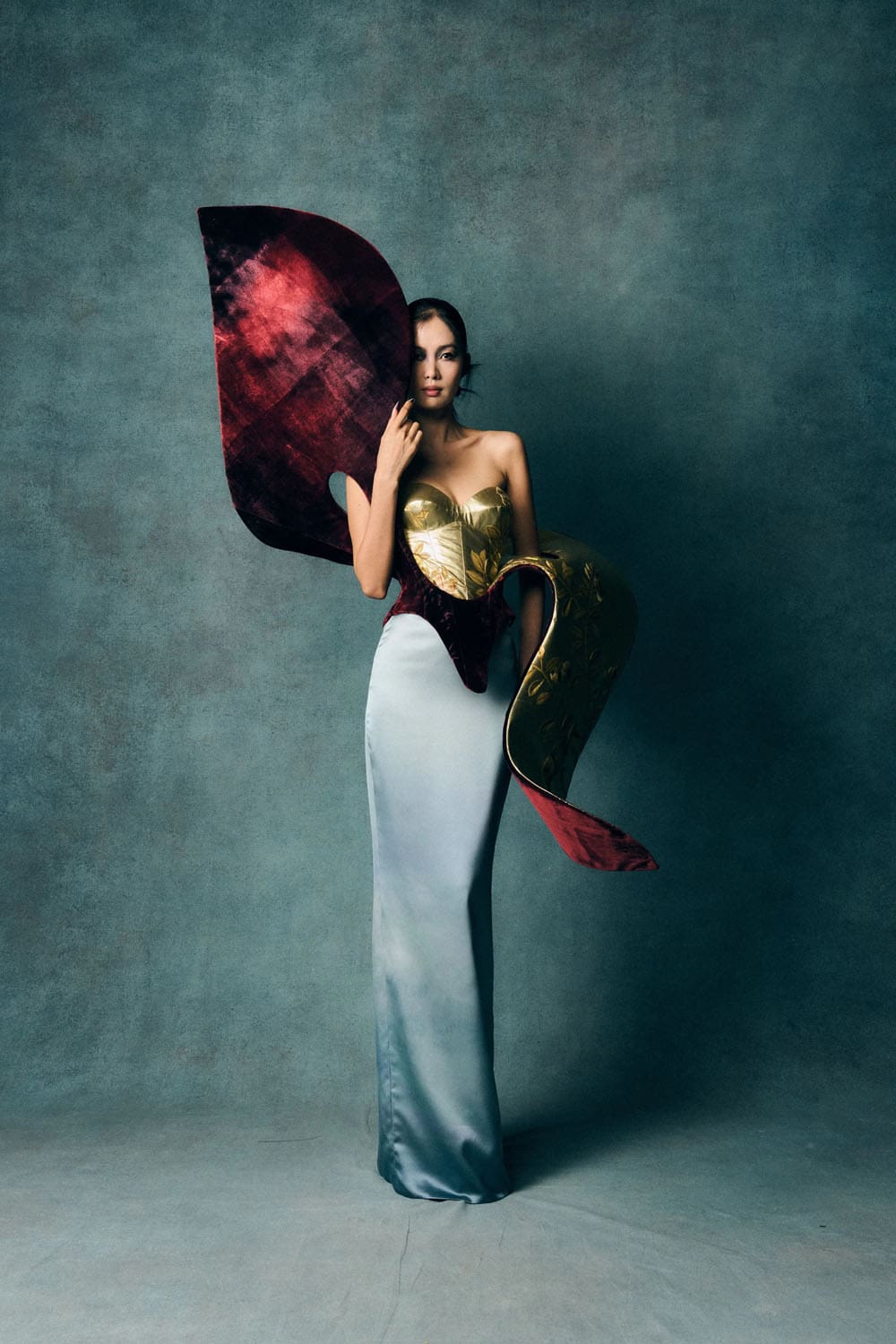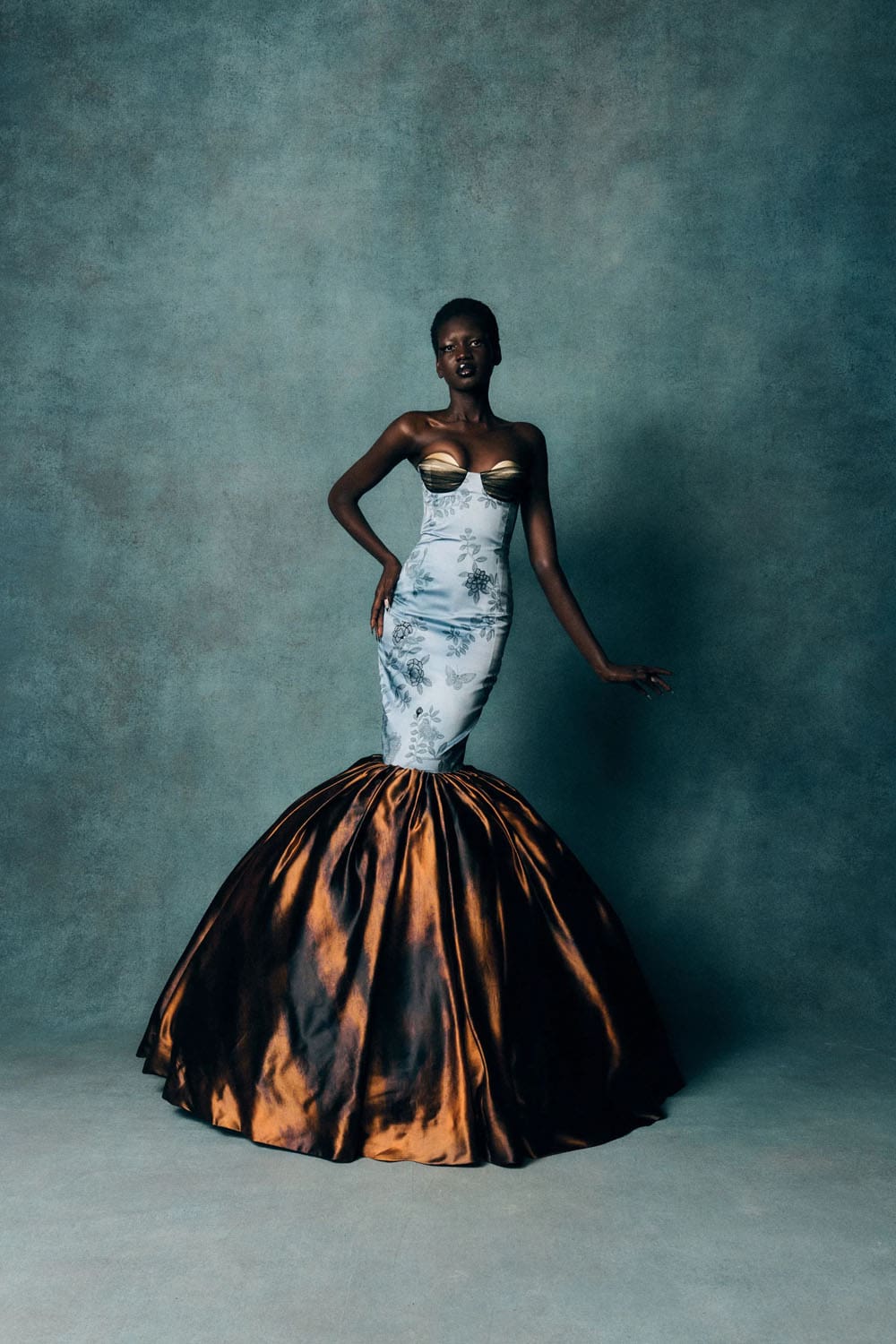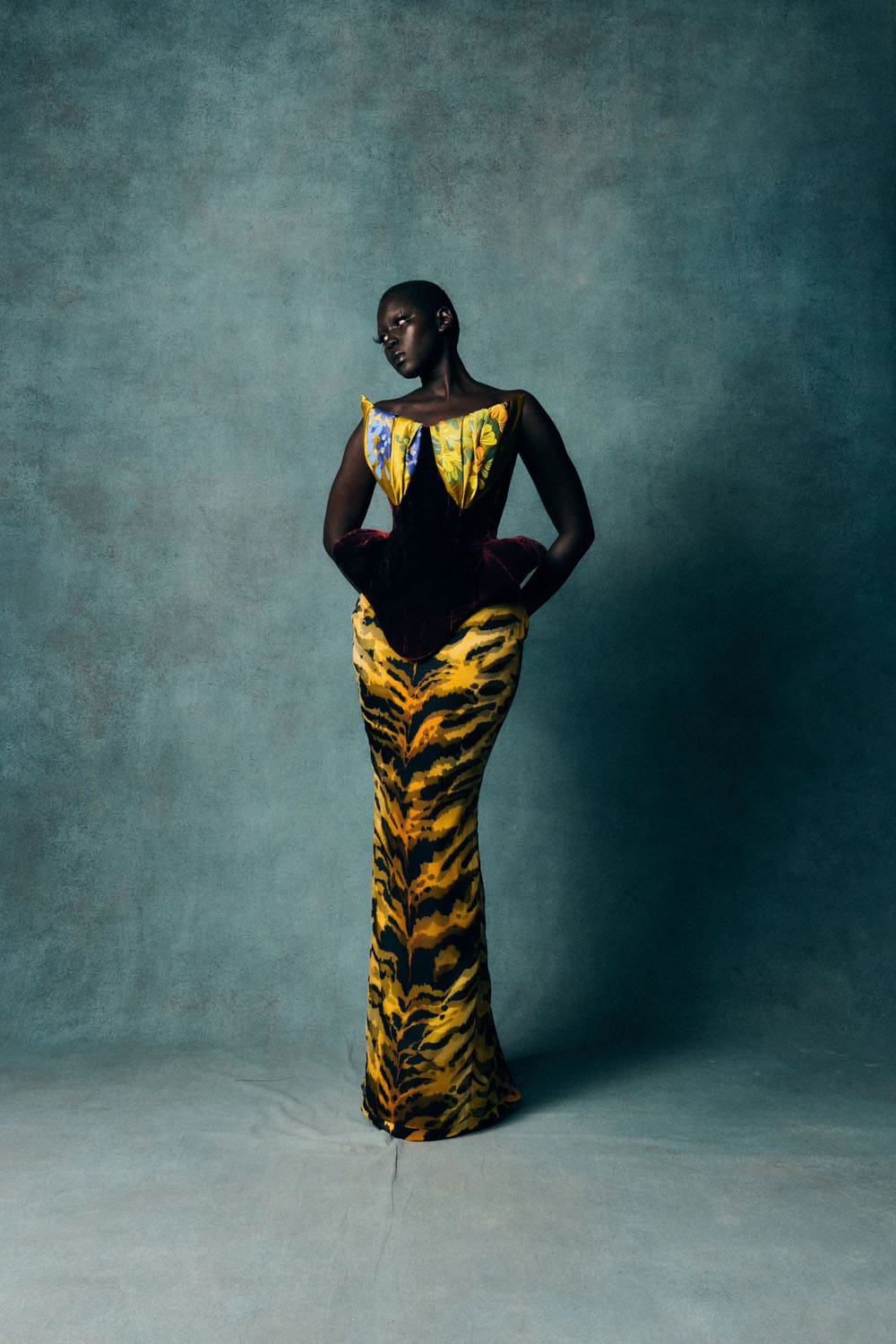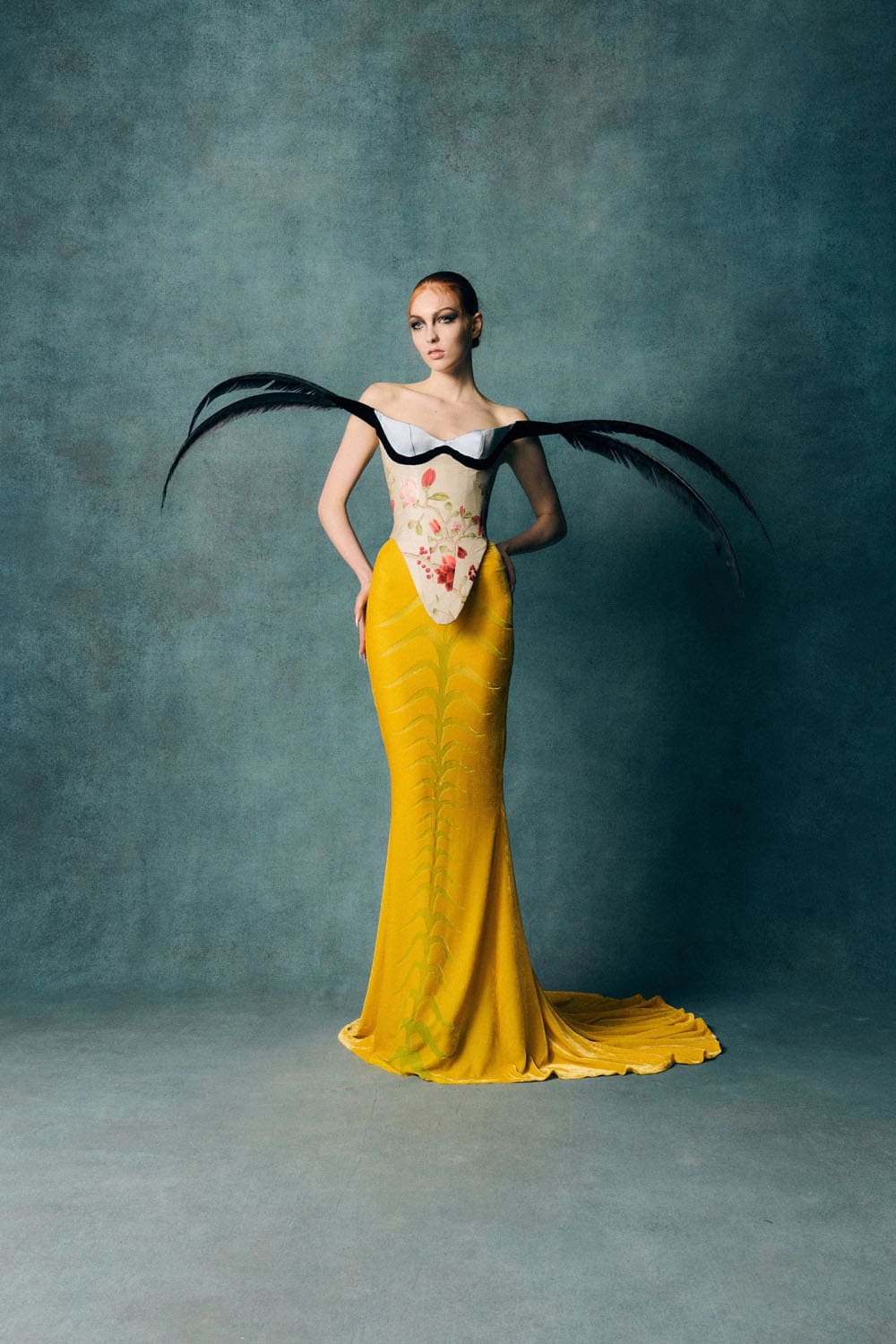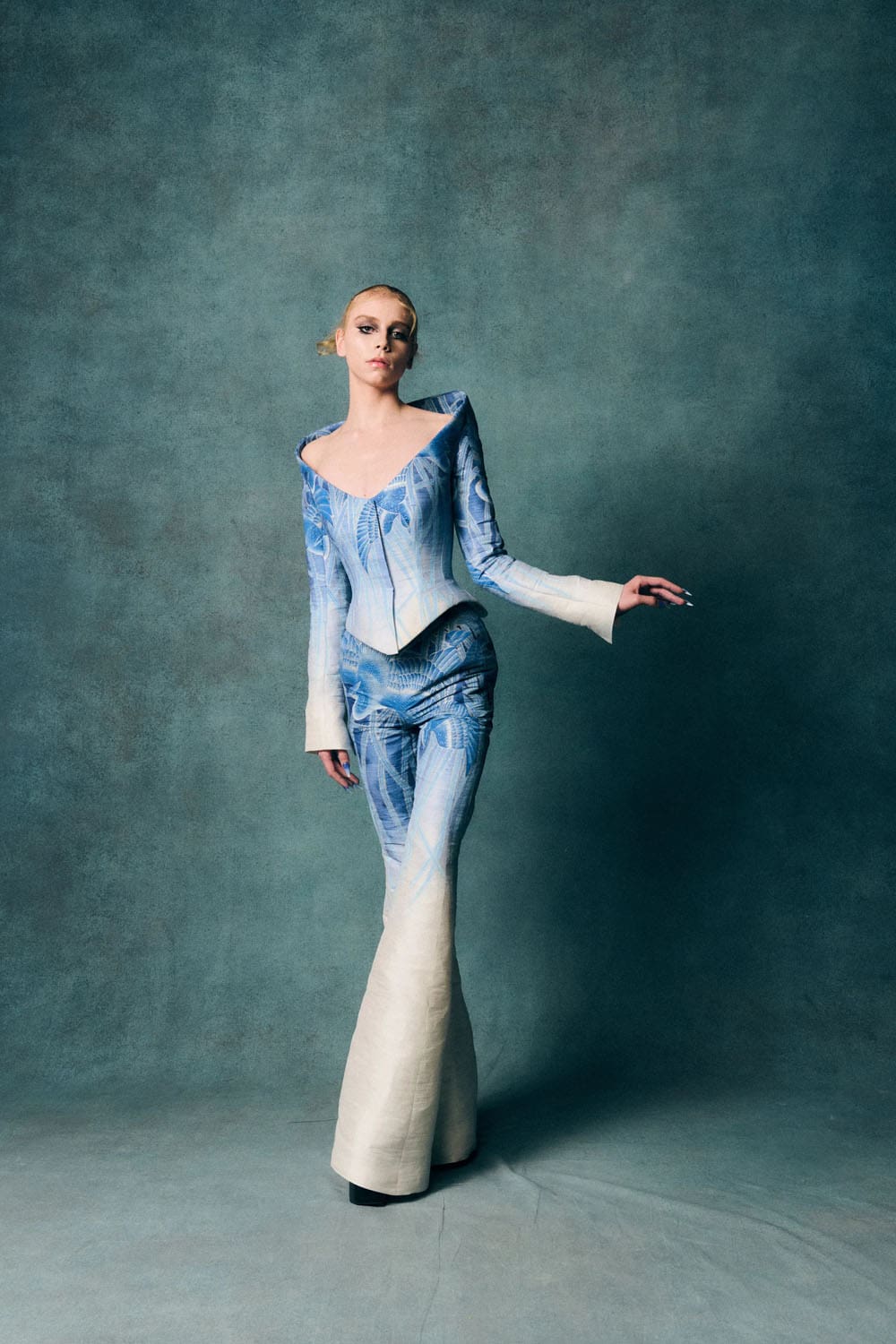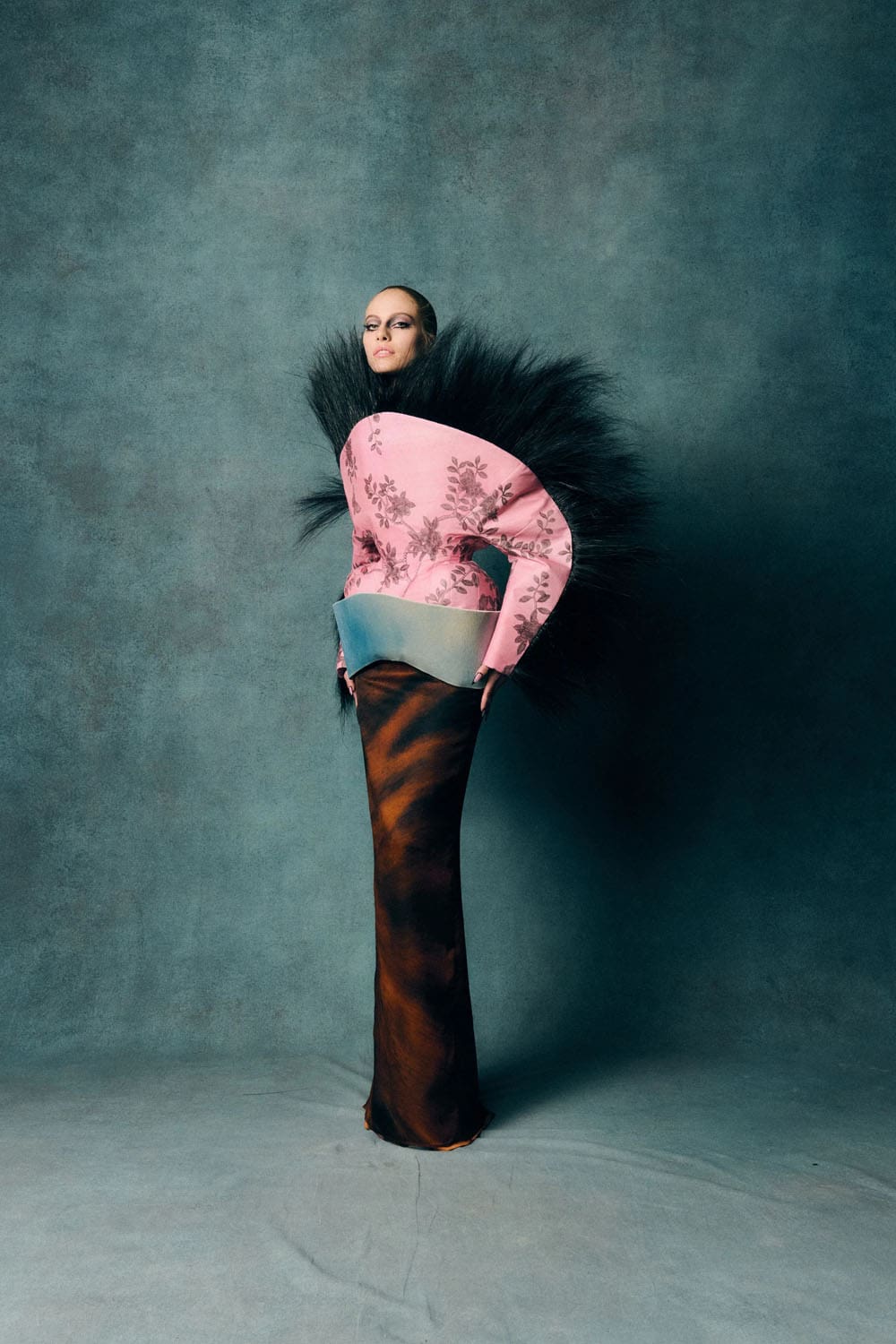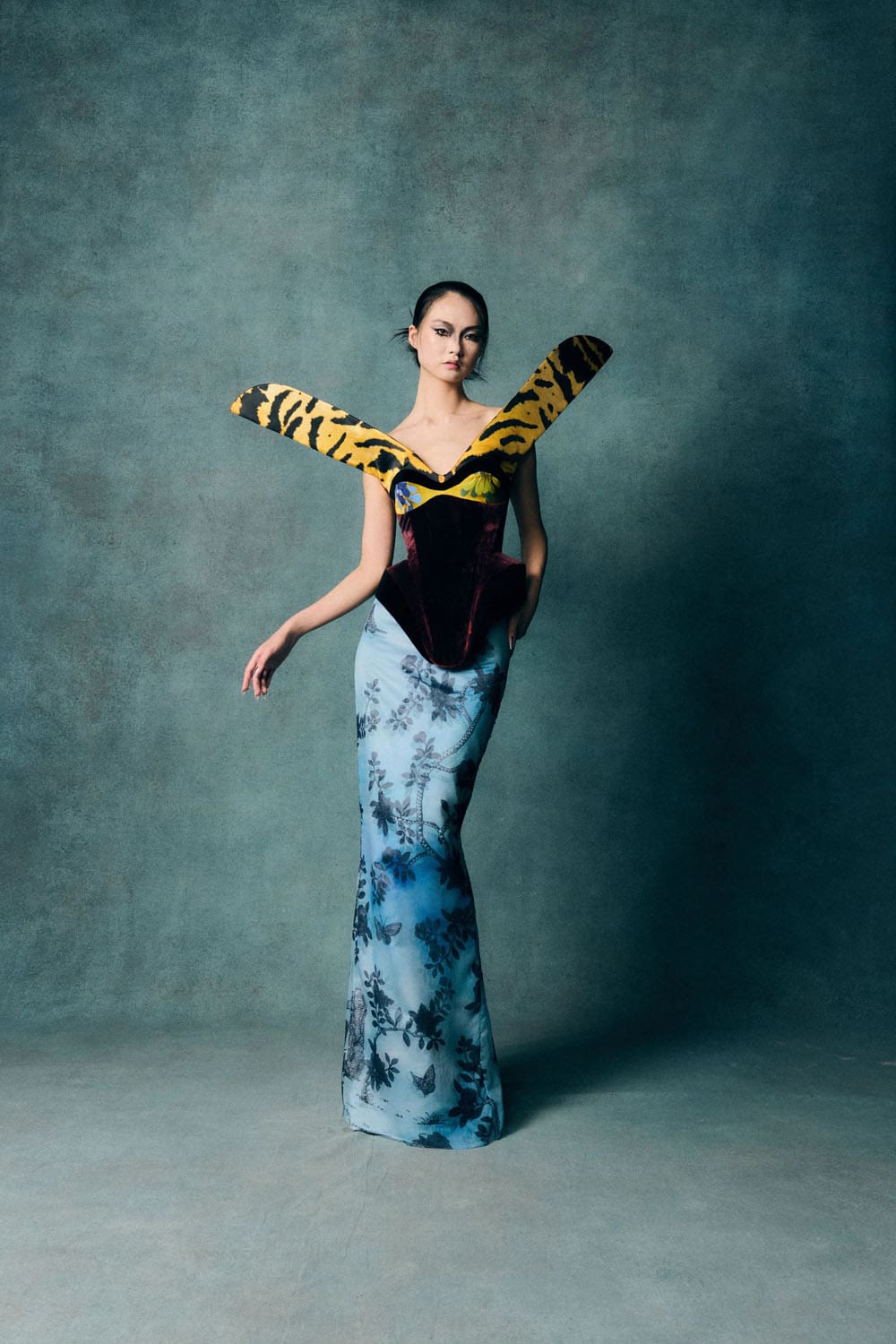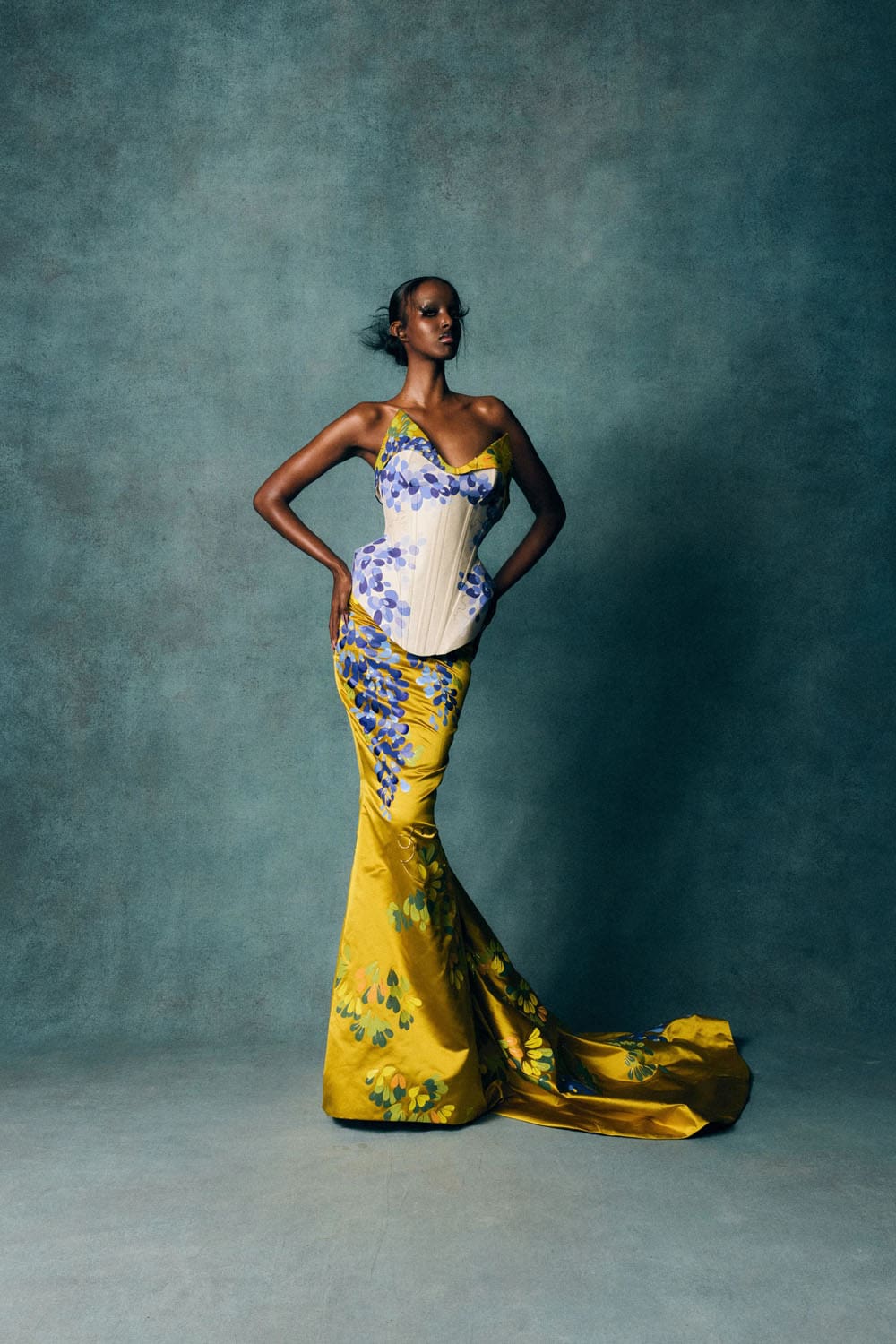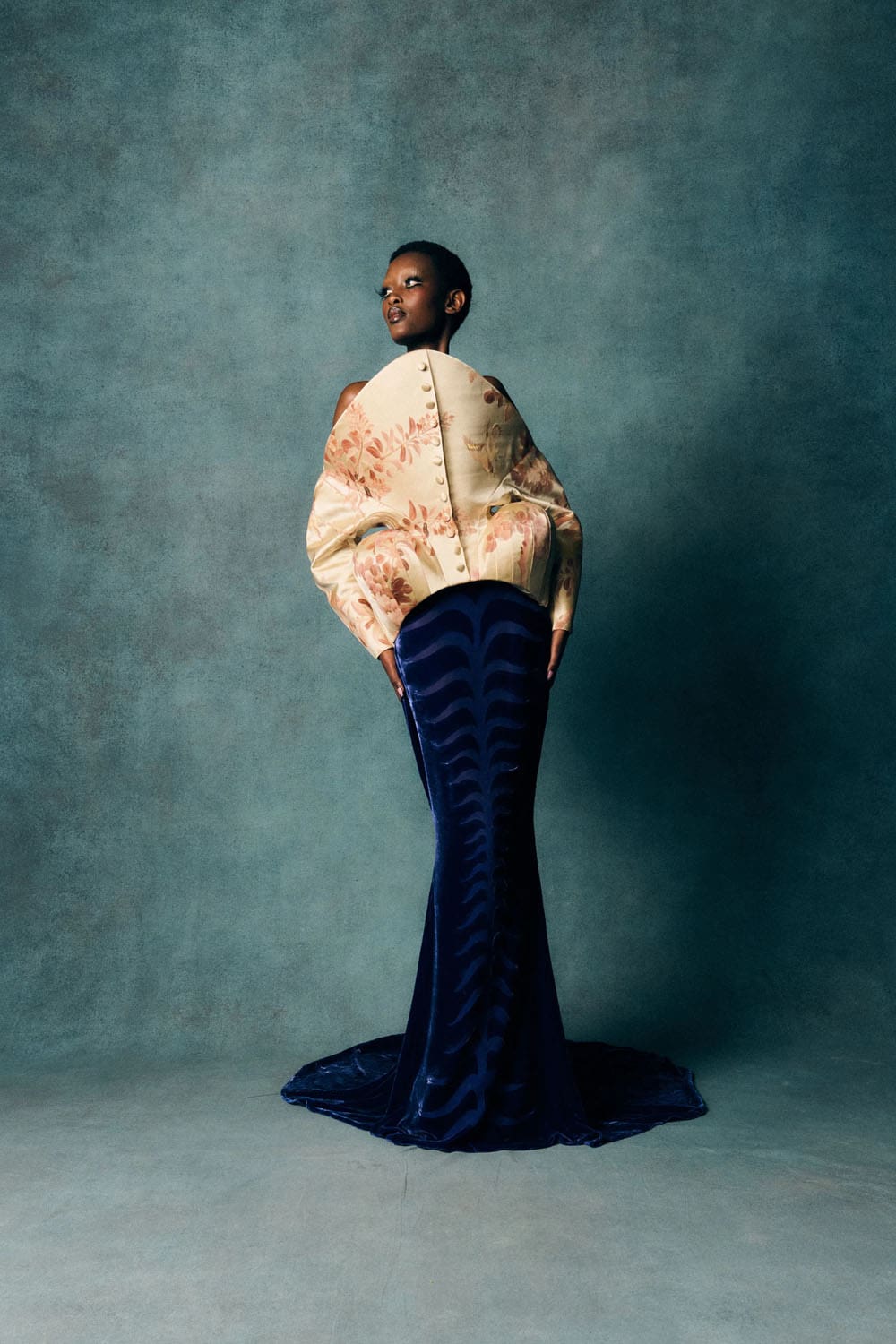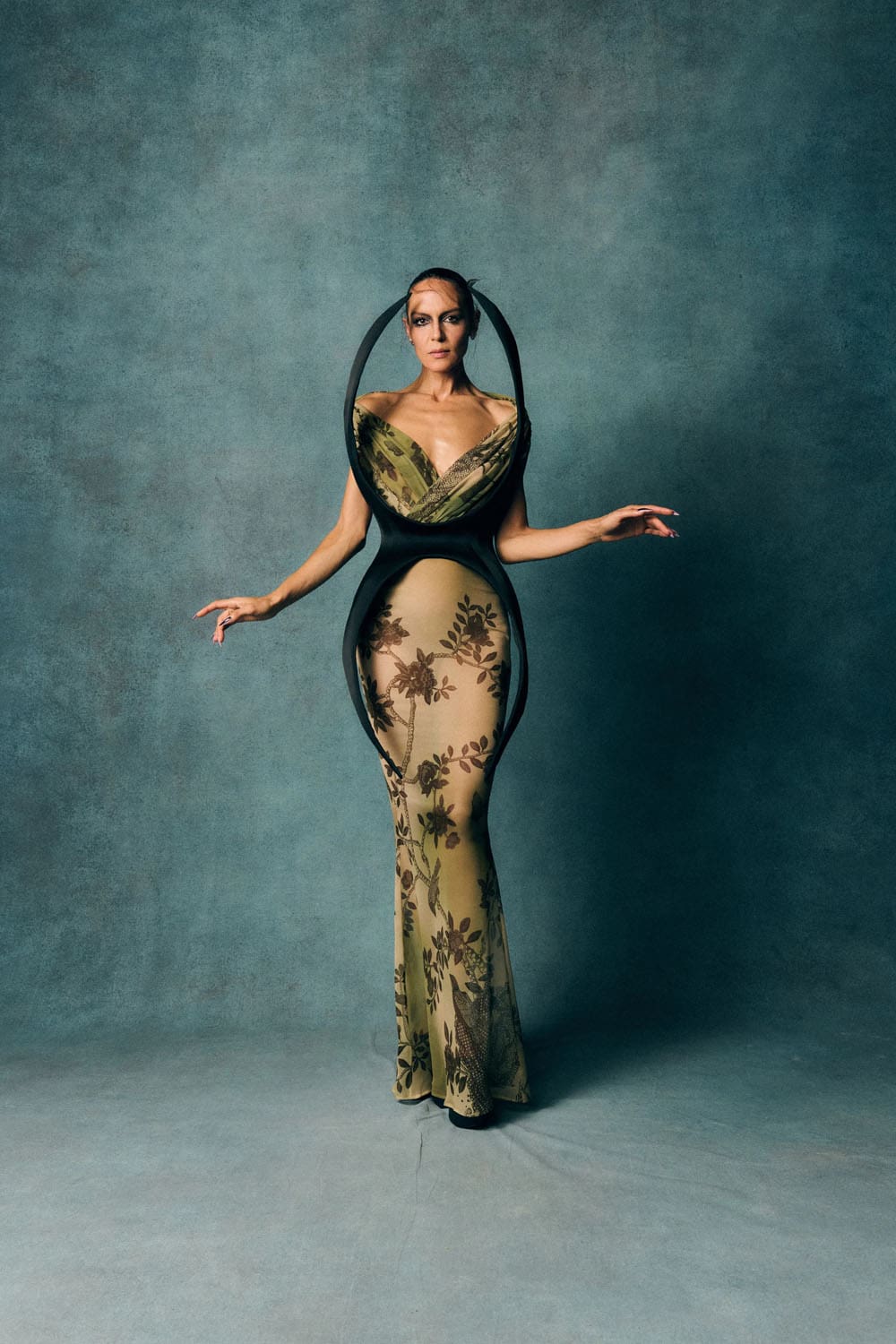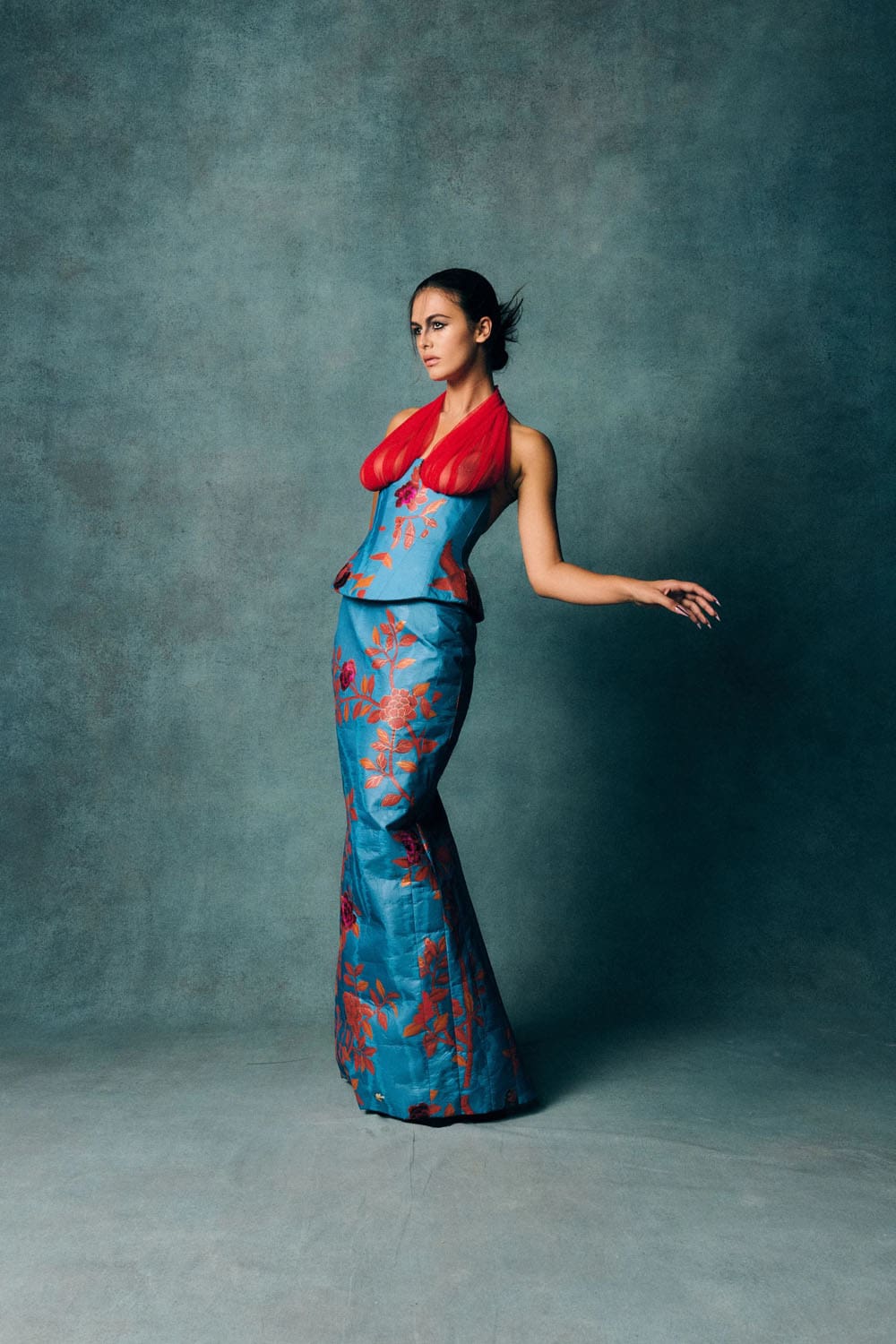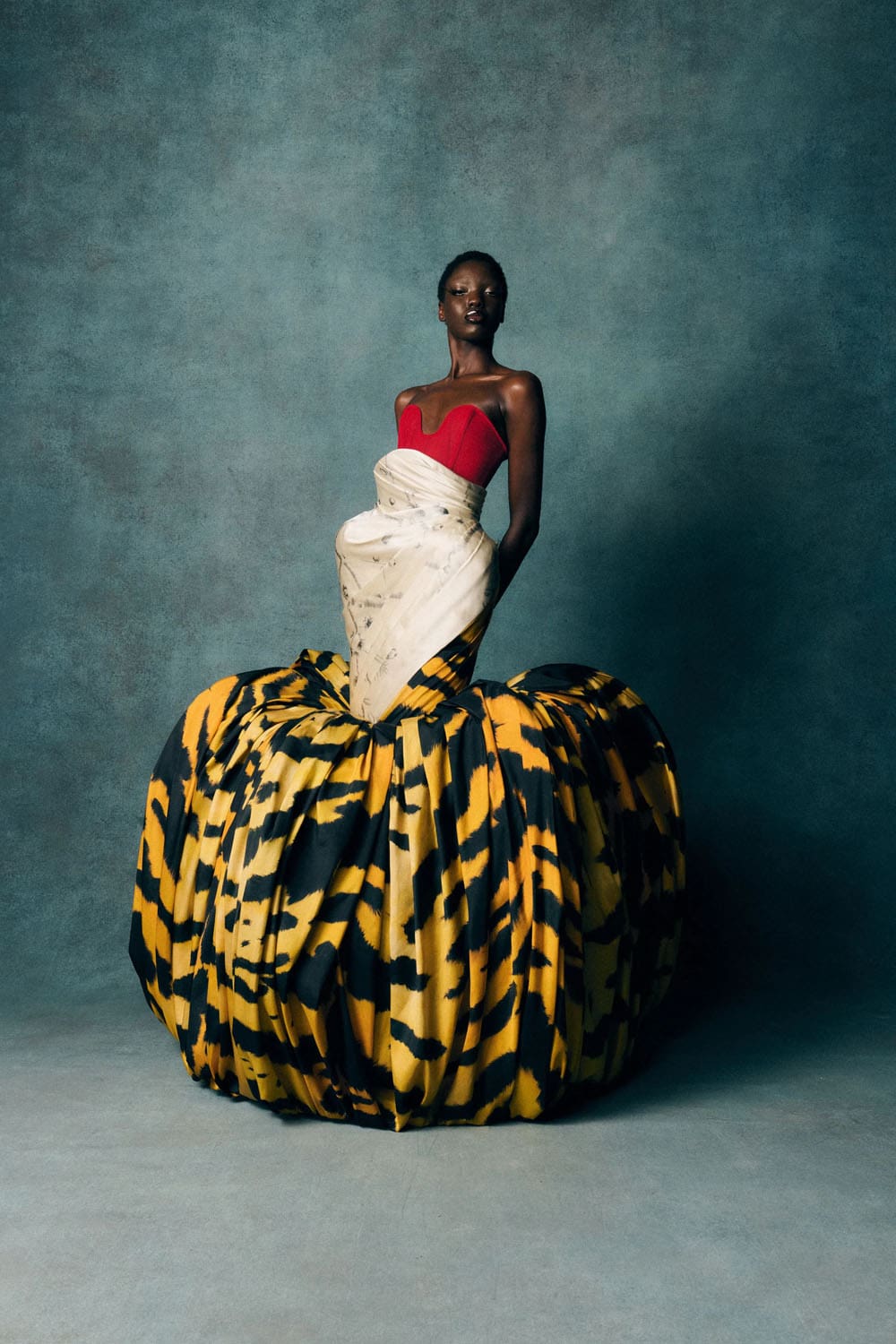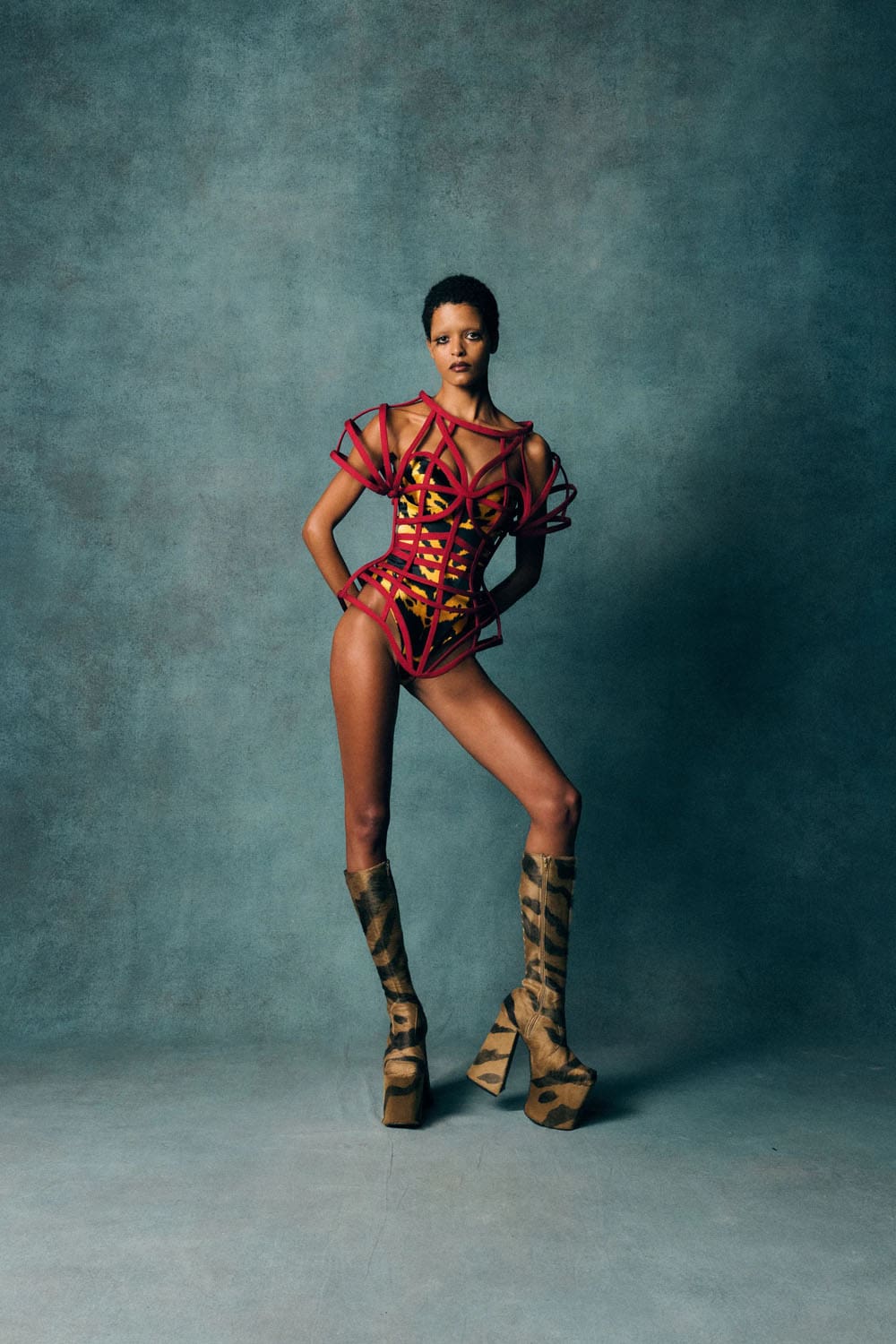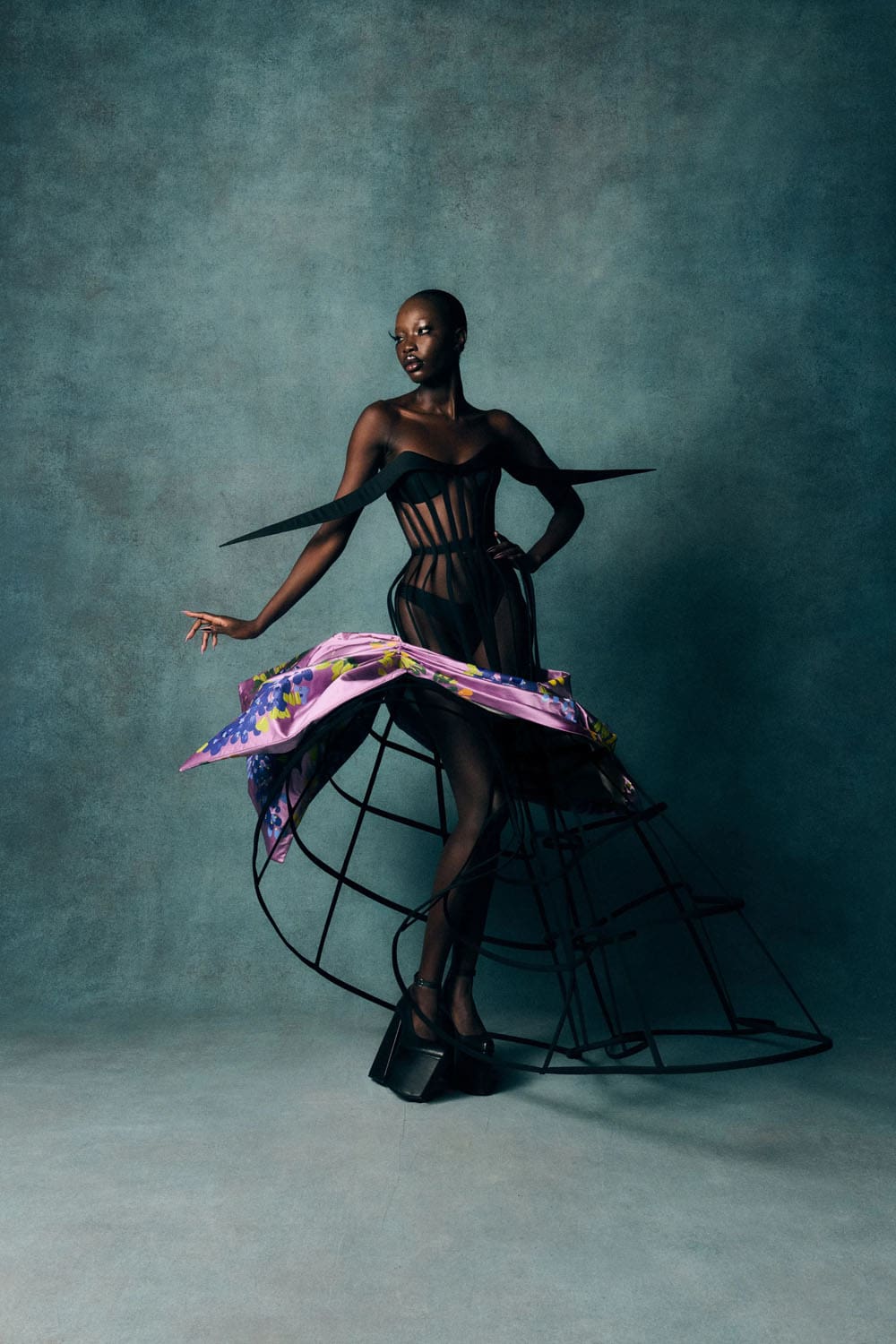Harris Reed Spring Summer 2026 London “Couture in Intimate Scale”. Story by Eleonora de Gray, Editor-in-Chief of RUNWAY MAGAZINE. Photo Courtesy: Harris Reed / Photographer Suleika Mueller.
Ten seasons into his own label, Harris Reed has begun to define what his house stands for. Spring Summer 2026 was presented salon-style in the Gothic Bar of St. Pancras London, a low-lit, historic setting that brought a sense of intimacy to his maximalist language.
For Reed, this was not a retreat, but a moment of reflection. “Back in uni, they said: no one will ever buy this,” he recalled of his early, extravagant queer art pieces. A decade later, his front row is no longer just friends and journalists but clients, collectors, and a growing global base of couture buyers. It is a market he has shaped himself.
The collection—14 looks in total—was less about uniformity and more about individuality. Each piece was designed as a character, carrying a thread of Reed’s codes: David Bowie and Mick Jagger, Victorian ladies, English heritage. The palette was his boldest yet, with cobalt and periwinkle, burgundy, gold, and pastel pinks. A fishtail gown with a bubbled animal-print skirt offered a new kind of ease, standing apart from the mathematical architecture of his previous gowns.
Still, Reed’s core techniques were fully present. Corsetry, caged silhouettes, and sculptural volume defined the collection. Feathers crowned shoulders, satins swirled against tulle, and gilded bustiers gave way to velvet skirts patterned with acid yellow motifs. His collaboration with English wallpaper studio Fromental continued, with panels of hand-painted wallpaper transformed into bodices and skirts. Reed also introduced his own prints, with an eye to the future. “I’ve always had the dream of ‘Ralph Laurening’ the whole brand,” he said, envisioning textiles that move beyond fashion into interiors and lifestyle.
Yet the irony is clear: while Reed dreams of expanding his own house into the full scope of lifestyle and couture, his current role at Nina Ricci offers little room for such ambition. Once a storied maison, Nina Ricci has been worn down by years of mismanagement, its couture legacy reduced to vague gestures at past elegance. Reed arrived with the hope of restoring that glory, of reintroducing craftsmanship and fantasy to a brand that once defined Parisian refinement. Instead, he has been confined to repetition—producing diluted variations of what was once Ricci’s hallmark, without the creative freedom or structural support to rebuild it.
The show felt more measured, less theatrical, but no less couture. The workmanship—precise, intricate, unapologetically crafted—was the constant. What shifted was the atmosphere. In a smaller room, surrounded by characters rather than an audience, the designs spoke differently: less about spectacle, more about presence.
For Harris Reed, Spring Summer 2026 is not a step back, but a refinement. Couture on his terms—built to take its place on red carpets, in archives, and now, perhaps, in the everyday lives of those who choose to live inside the fantasy.
See All Looks Harris Reed Spring Summer 2026
